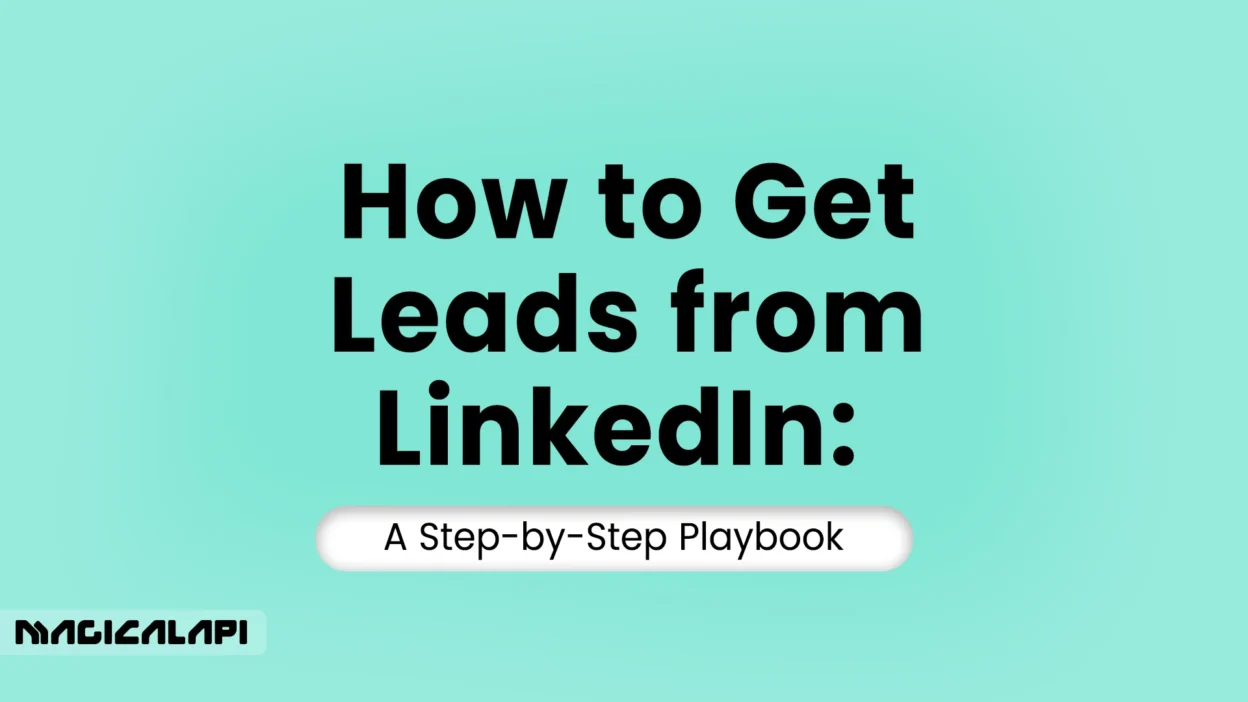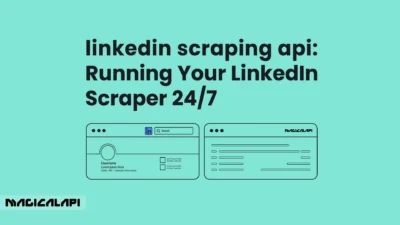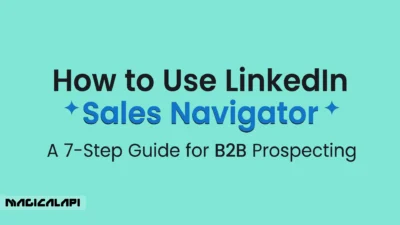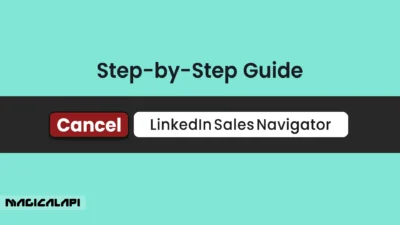In the ever-evolving landscape of B2B marketing and sales, LinkedIn has been a consistent leader and value player over the years. Now that we are in 2025, LinkedIn is no longer simply a place to find connections or build an online resume; it is now a living and breathing ecosystem for content, community, and commerce and has become the number one channel for high-value lead generation.
If you are asking yourself ‘how to get leads from LinkedIn?’ the first step is to understand that the contemporary way of earning leads is less about the sales process and more about establishing authority and allowing genuine personal connections to occur.
What you have in your hands is an actionable chronicled playbook to find our way to success. We are going to get beyond just the tips and give you a methodical approach with clear steps to turn your LinkedIn footprint into a predictable lead generation machine.
As a reader you might be looking to create more leads so you can understand how to get sales leads from linkedin and meet your performance quota or you might simply want to learn how to get business leads from linkedin to grow your company! All of the principles and action steps will give you the outcomes you need!
Table of Contents
Optimize Your LinkedIn Profile to Become a Lead Magnet
- Your LinkedIn profile is the basis of your entire lead generation process. It is your digital handshake, your personal landing page, and your sales rep that works 24 ours a day. So before you do any outreach or sales efforts, you need to optimize everything so you can reach, engage, and convert your ideal prospects.
- Your Profile Picture & Banner: First impressions are everything. Your profile picture needs to be high-definition with you looking straight ahead and at the camera with a friendly and approachable expression. The area behind you, also known as the background, should be neat and professional. Your banner photo is your best real estate—use that space to show your value proposition visually as possible. For example, show your company logo, tagline, or an image of you executing your expertise at an event for example.
- A Headline That Sells a Solution, Not a Title: Your job title is for your boss. Your headline is for your prospect. Instead of saying “Sales Manager at XYZ Corp”, say “I help [Your Target Audience] [Achieve Desired Outcome] by [Your Process/Service]”. For example, “I Help B2B SaaS Founders Scale to 7-Figures Through Strategic Content Marketing”. In that short headline, you immediately identify who you are, who you help, and what their desired outcome is. After following the formula above, you have captured the essence of who you are and what you do.
- The “About” Section: Tell Your Story. Now it’s your time to shine. It’s important to sequence your summary to ensure maximum impact. This is how it’s structured:
- The Hook: Start with a statement that speaks to a significant pain point to your target audience.
- The Mission: A concise explanation of who you help and what you do.
- The Proof: Disclose your knowledge, experience, successes, etc. Consider using bullet points with measurable achievements (i.e. “Helped clients grow their inbound leads by over 300%”).
- The Call to Action (CTA): To close, tell the reader what you would like them to do next. Maybe book a call, visit your website, or download something.
- Showcase Your Best Work in the “Featured” Section: This section has a visual nature and is the place to pin your best bits. Showcase your best-performing *post*, links to lead magnets (for example, ebooks or webinars), case studies, or link to your company’s website. It is a curated portfolio displaying your expertise.
- Describe Your Experience with Achievements: Provide your experiences in terms of accomplishments not a list of position duties. Use the STAR approach (Situation, Task, Action, Result) and describe in what way you made a measurable contribution to your previous job(s).
- Skills, Endorsements and Recommendations: Fill in your skills list with as many relevant keywords as needed. Actively solicit endorsements from colleagues and clients. Most importantly, ask for written recommendations from your satisfied customers. A terrific recommendation is an extreme form of social proof that builds a great deal of trust.
Asking the question, How do I extract data from Linkedin? is another great way to find opportunities to extract additional market intelligence.
Pinpoint Ideal Prospects Using LinkedIn’s Advanced Search & Filters
Knowing the target audience is critical, and it’s impossible to find good leads without identifying them. LinkedIn search is just waiting to be utilized because it is a very effective way to find and qualify prospects.
- Using Free Search for how to get leads from linkedin: it is important to understand how resourceful the standard search bar can be for results; it isn’t limited as many people consider; you can play around with boolean types (AND, OR, NOT) to complicate searches without limitation. You can click on “All filters” to segment (Search by – connections, locations, current or past companies, industries, etc.). For example, searching for “Marketing Manager” AND “SaaS” NOT “Entry Level” in a specific city, could provide a thoroughly targeted initial list.
- Taking advantage of Sales Navigator: Sales Navigator is an absolute must for anyone serious about generating leads through LinkedIn; it’s really an unacceptable investment otherwise. Sales Navigator also enhances the basic search with greater filtering options, e.g. – company headcount, years in position, technology being used, etc. Here are some main features:
- Advanced Lead & Account Search: You can prospect very specifically, anytime you want, and set up alerts for new prospects that match your search criteria.
- Lead Recommendations: LinkedIn’s algorithm recommends relevant leads based on your preferences and activity and is enabled when you have a Premium account.
- InMail Messages: You can contact anyone on LinkedIn even if you’re not connected (with a response rate vastly higher than cold email).
- Custom Lists: You can organize your prospects into custom lists for targeted awareness and personalized outreach campaigns.
After you have compiled your perfect prospects list, you may use a tool such as a Linkedin Profile Scraper to quickly acquire publicly available information for an in-depth analysis of your target market.
LinkedIn Profile Scraper - Profile Data
Discover everything you need to know about LinkedIn Profile Scraper , including its features, benefits, and the different options available to help you extract valuable professional data efficiently.
Publish Value-Packed Content That Attracts Decision Makers
Your inbound lead generation on LinkedIn runs on content. You are able to gain authority-trust while luring your target audience to you with relevant value-based engaging content (not just information).
- Build Your Content Pillars: Be strategic-you cannot just post what you want. You need to post content based in the 3 -5 primary themes, or “pillars”, based on your knowledge and that of your audience and trade. Stick with these pillar – it will build consistency for your personal brand.
- Master Multiple Content Formats:
- Text & Carousel Posts: Short, punchy text with strong hooks and clear takeaways does well! Carousels (release a PDF) have more room for detailed content and are very engaging because you have to click to view each piece, thereby extending your reach.
- Polls & Questions: Polls and questions can be fun and informative engagement opportunities, and can help gather market data. Ask interesting questions about topics that relate to your industry to get them to comment.
- Long-Form Articles: Use LinkedIn Articles for longer, deep-dive, thought leadership articles. These will be indexed by Google, and can help define you as a real expert on a topic.
- The 80/20 Content Rule: Spend 80% of your content just providing value—teaching, inspiring, and aiding your audience—while the last 20% promotes your product, service, or investment. This way it is likely you generate an audience before you attempt to sell to them.
Read More: How to Get Phone Numbers from LinkedIn?
Leverage the Power of Video and Multimedia Content
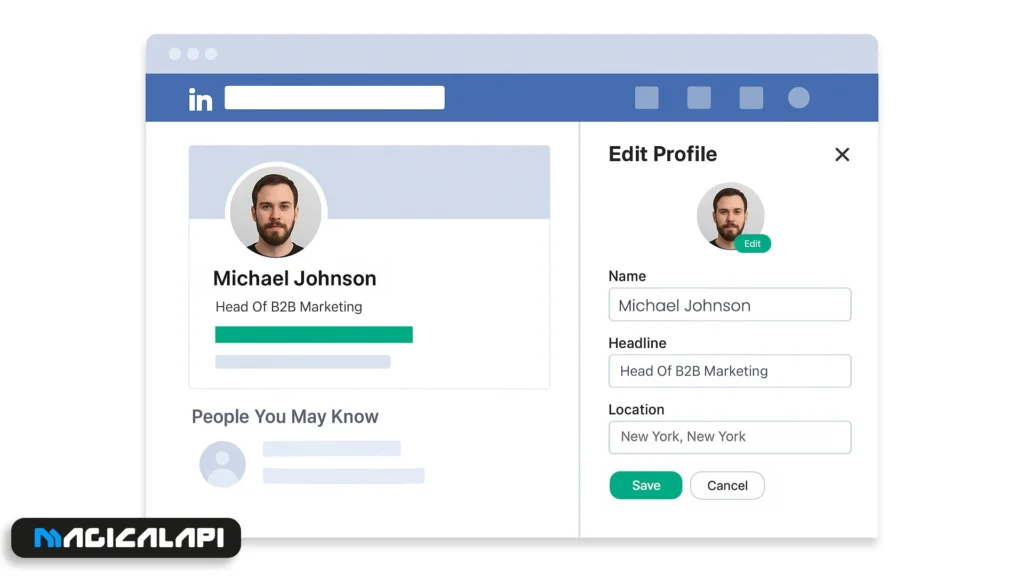
To know how to get leads from linkedin, we shouldn’t neglect the role of video and multimedia content.
- Static content will not be enough in 2025. Video and other types of multimedia will help people notice your content in a cluttered feed and develop a more personal relationship with your readers.
- Get Into Short-Form Video: Create short (under 90 seconds) vertical videos providing quick tips, sharing insights from the industry, or providing behind the scenes content. These videos can be hugely engaging and allow your personality to shine through.
- Go Live: You can use LinkedIn Live to do Q&As with your audience, interviews with other subject-matter/industry experts, or product demonstrations. Live video has a sense of urgency and it allows your audience to engage with you in real time.
- Always Use Captions in how to get leads from linkedin: Most people who watch videos on social media watch the video with the sound turned off. Utilize a tool to burn captions into your video, so your message is delivered in the most efficient way possible.
- Create Informative Infographics: Use an easy to use, free, graphic tool like Canva to create infographics that turn complex data or processes into simple, digestible and shareable content. Infographics are visually engaging and function well to convey, sometimes large, amounts of information
Engage in Niche Groups to Warm Up and Nurture Leads
LinkedIn Groups offer a highly focused community, where you can connect with prospects in a contextual manner rather than a salesy manner. This is also an answer to:” how to get leads from linkedin.”
- Finding and Vetting Your Groups: Search for groups that align with your niche and target audience. Before you join a group you’ll want to check the activity of the group; you should look for groups that have had discussions recently, with good moderation, not groups that are filled with spam.
- You can develop your own “Give, Give, Give, Ask” strategy: For the first couple of weeks in a new group, your only goal is to give value to the group. Answer questions, provide good advice in the comments of other people’s posts, and share relevant third-party content in the group. After you have contributed value for a few weeks, and have established yourself as a helpful member, you can begin connecting with individuals and once in a while share your own content. This is your strategy for warming up leads.
Send Personalized Connection Requests to Spark Real Conversations
A generic connection request is a wasted opportunity. A personalized connection request is the first step towards having a good business relation.
- The Power of the Personalized Note: Always add a note with your connection request. Keep your note simple and short. In your connection note you may mention a common group, a recent post they made, a common connection, or an interest from their profile.
- A good example: “Hi Sarah, I saw your interesting post about the future of AI in marketing. I am also interested in this topic and I would like to connect and follow your work.”
- A bad example: “Hi Sarah, I would like to connect.”
- The Follow up for how to get leads from linkedin: When someone accepts your request – do NOT pitch them yet! Just follow up. Thank them for connecting and ask them an open-ended question to start a conversation. For instance, “Thanks for connecting, Sarah! I would love to hear your thoughts on [industry trend]- what do you think?” This is the best way to ultimately collect sales leads from LinkedIn.
Turn Engagement into Qualified Leads with LinkedIn’s Native Tools & Analytics
There is a wealth of data available to marketers on LinkedIn. Savvy marketers utilize this data to identify warm leads and optimize their marketing plans.
- “Who’s Viewed Your Profile”: These are people who are already interested in you! Check this list regularly. If a viewer matches your ideal client profile, it is a warm lead. You could reach out to them with a message such as, “Hi John, thanks for visiting my profile. I see that we are both in [industry]. Would you like to connect?”
- Post Interaction for how to get leads from linkedin: Look closely at who consistently likes and comments on your posts. These people are also your engaged audience. They are prime candidates for a personalized connection request and follow up.
- Company Page Analytics for how to get leads from linkedin: If you have a Company Page there is a Visitor and Follower source of analytics. This will provide you with the demographics (job function, seniority, industry) of the people who follow your brand, which can be very useful to see if you are reaching the right audience. It is also the main source of getting business leads from LinkedIn.
You can investigate next-level methodology for additional layered analysis beyond the native tools available to you. Exploring How To Do LinkedIn Data Scraping? While you’re doing B2B research, a specific Linkedin Company Scraper is particularly effective!
LinkedIn Company Scraper - Company Data
Discover everything you need to know about LinkedIn Company Scraper , including its features, benefits, and the various options available to streamline data extraction for your business needs.
Measure and Refine Your LinkedIn Lead Generation Efforts
- You cannot improve what you cannot measure: A data-driven approach is paramount for long-term success.
- Define your Key Performance Indicators (KPIs): Measure everything across the funnel:
- Awareness: Profile Views, Follower Growth, Post Impressions.
- Engagement for get leads from linkedin: Comments, Likes, Shares, Connection Request Acceptance Rate (ideally >30%).
- Conversions for get leads from linkedin: Clicks on your CTA links, Discovery calls booked, InMail responses, and at best, a tally of qualified leads that were added to your pipeline.
- Test and Learn in get leads from linkedin: Leverage your data to A/B test various aspects of your strategy. Utilize different headlines, formats of content and even types of connection message templates. See what resonates the most with your audience and double down on what works.
Conclusion: Generate leads from LinkedIn
Learning how to effectively generate leads from LinkedIn in 2025 is a marathon and not a sprint. It’s a blend of both art and science that rewards authenticity, consistency, and a genuine intention to help others. By optimizing your profile for your audience, providing value, creating valuable content, having meaningful conversations, and tracking your data, you will create a strong and predictable pipeline of high-quality leads. Move beyond the mindset of merely connecting to building a community and establishing your authority. The business results will follow.
FAQs for How to get leads from linkedin
1. How long does it take to get results from LinkedIn lead generation?
While you will find early signs of success (e.g., increased profile views, engagement in your posts and comments) within a few weeks of consistent effort, establishing a stream of qualified leads will usually take 2-3 months. Pipeline building is not one and done, and it will take time to build momentum.
2. What is the most important part of a successful LinkedIn lead generation strategy?
The most important part of a successful strategy is to continuously provide authentic value. You should always create content and have conversations with the goal of helping, educating, or informing your target audience. This builds trust which is fundamental to converting a connection into a client.
3. When to use automation tools for LinkedIn lead generation?
Automation tools can be used in moderation for time savings on repetitive tasks but should be used with caution. Do not use tools that just send out generic/spammy messages. Best practice is to use automation to support your around personalized project, not in place of it. Personalization in scale, NOT mass automation you can do!
4. How much time should I spend on LinkedIn each day for lead generation?
Consistency is much more important than intensity. You should try to commit to 30 – 60 minutes each day on the platform. You can break it down: 10 mins on your feed and engage, 10 mins to reply to any DMs or comments, 15 mins working on content and another 15 for personalized outreach and prospecting.


